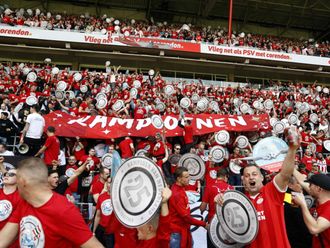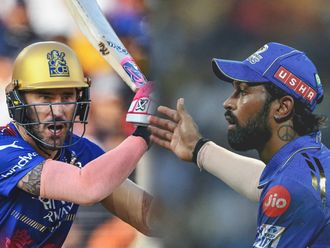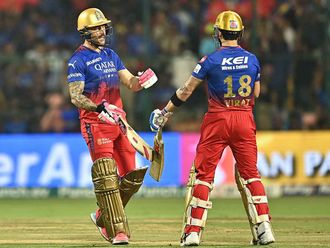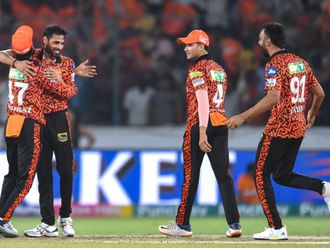New York: Strikers and midfielders love it. Goalkeepers hate it.
The ball that will be used at the World Cup in Germany probably will be praised as much as it is disparaged.
The "Teamgeist" (team spirit) ball is the last in a line of 10 World Cup balls by Adidas. It features the latest in design and technology, promising a more accurate flight.
"It's a nightmare, an absolute nightmare," DC United goalkeeper Troy Perkins said. "There's going to be a lot of goals when the World Cup starts. But I guess that's what people want to see."
Major League Soccer and the Argentine first division are the two leagues officially using the Teamgeist since the beginning of the year, providing an early testing ground for a new 14-panel ball without stitches.
"Technology hasn't favoured goalkeepers, that's for sure," said New York Red Bulls keeper Tony Meola, who has 100 appearances with the United States. "It's lively, it knuckles a lot, especially if it gets anything on it: dirt, sand, water."
The Champions League used the Teamgeist since its introduction in December through the final, and some clubs in Germany, where the home teams provides the ball, also have been using it.
In MLS, at least, for every detractor, there are more than enough advocates.
"For me, it's very good. It has a very good touch," Red Bulls and former France midfielder Youri Djorkaeff said. "I don't know if a perfect ball exists, but it's close to perfect."
Of course, Djorkaeff's compliments came a few weeks after a 35-yard free kick goal in the Red Bulls' season opener against DC United, when he beat Perkins.
Statistics provide little support for the anecdotal evidence. Scoring in MLS through mid-May this season compared with last is down nearly two-tenths of a goal a game (2.96 to 2.80). In Argentina, scoring dropped from 2.7 goals a game in the 2005 Clausura championship to 2.3 this year.
"Whenever we've introduced a new ball, it's always been the same: goalkeepers don't like it," said Antonio Zea, head of product marketing for Adidas' US soccer division. "They have to react quicker, act faster."
American goalkeepers aren't the only ones complaining. When Jens Lehmann had his first experience with the ball at the German national team training camp in Geneva, he didn't like it, either. "When it rains, it's going to be very uncomfortable for us," Lehmann said. "It gets very slippery and flutters in the air."
Adidas contends the Teamgeist is three times more accurate than its closest competitors, but does not provide data from tests with its robotic leg at its laboratory in Scheinfeld, Germany.
Adidas introduced the familiar 32-panel ball to the World Cup in 1970 in Mexico with its "Telstar." It was iconic in a sense that it also introduced the widely recognised pattern of alternating black and white panels that year, mainly for the purpose of television.
The 32-panel ball replaced the standard design of all-brown or all-white leather featuring 18-panels of horizontal strips, a design similar to a volleyball. That style was known by many in the trade as the Santiago because of its use at the 1962 World Cup in Chile.
Watertight seal
The World Cup ball is white with black markings and some gold lines; the MLS ball has blue and green. The ball for the July 9 final in Berlin will have a gold tint.
While the Telstar was the first laceless ball at the World Cup, Teamgeist will be the first stitchless ball. Adidas is using a gluing and heating process to create a watertight seal as well as a more supple feel.
Teamgeist also includes a graphic change from the 2002 World Cup Fevernova ball that was criticised for a wobbling appearance while rotating in flight.
"There is a symmetrical balance in the engineering, a true centre of the ball," Adidas senior industrial designer Scott Tomlinson said. Entrenched perceptions remain. "Goalkeepers always hate a new ball," Chivas USA and former Mexican national team striker Francisco "Paco" Palencia said.
The 32-panel ball replaced the standard design of all-brown or all-white leather featuring 18-panels of horizontal strips, a design similar to a volleyball. That style was known by many in the trade as the Santiago because of its use at the 1962 World Cup...












